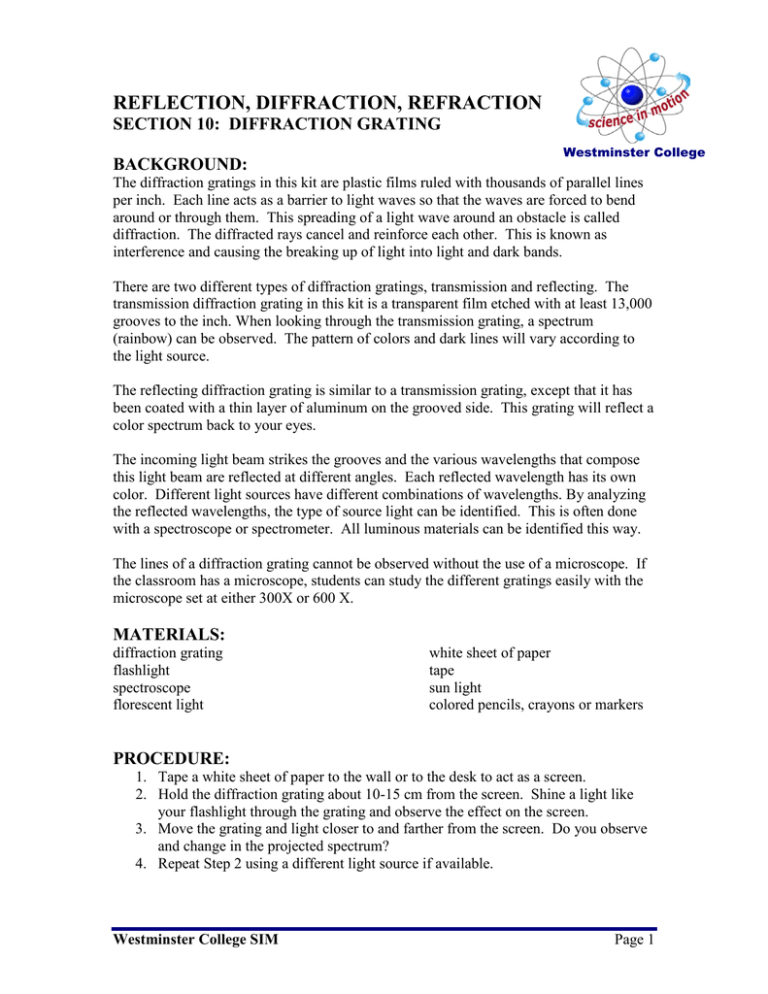REFLECTION, DIFFRACTION, REFRACTION SECTION 10: DIFFRACTION GRATING BACKGROUND:
advertisement

REFLECTION, DIFFRACTION, REFRACTION SECTION 10: DIFFRACTION GRATING BACKGROUND: Westminster College The diffraction gratings in this kit are plastic films ruled with thousands of parallel lines per inch. Each line acts as a barrier to light waves so that the waves are forced to bend around or through them. This spreading of a light wave around an obstacle is called diffraction. The diffracted rays cancel and reinforce each other. This is known as interference and causing the breaking up of light into light and dark bands. There are two different types of diffraction gratings, transmission and reflecting. The transmission diffraction grating in this kit is a transparent film etched with at least 13,000 grooves to the inch. When looking through the transmission grating, a spectrum (rainbow) can be observed. The pattern of colors and dark lines will vary according to the light source. The reflecting diffraction grating is similar to a transmission grating, except that it has been coated with a thin layer of aluminum on the grooved side. This grating will reflect a color spectrum back to your eyes. The incoming light beam strikes the grooves and the various wavelengths that compose this light beam are reflected at different angles. Each reflected wavelength has its own color. Different light sources have different combinations of wavelengths. By analyzing the reflected wavelengths, the type of source light can be identified. This is often done with a spectroscope or spectrometer. All luminous materials can be identified this way. The lines of a diffraction grating cannot be observed without the use of a microscope. If the classroom has a microscope, students can study the different gratings easily with the microscope set at either 300X or 600 X. MATERIALS: diffraction grating flashlight spectroscope florescent light white sheet of paper tape sun light colored pencils, crayons or markers PROCEDURE: 1. Tape a white sheet of paper to the wall or to the desk to act as a screen. 2. Hold the diffraction grating about 10-15 cm from the screen. Shine a light like your flashlight through the grating and observe the effect on the screen. 3. Move the grating and light closer to and farther from the screen. Do you observe and change in the projected spectrum? 4. Repeat Step 2 using a different light source if available. Westminster College SIM Page 1





